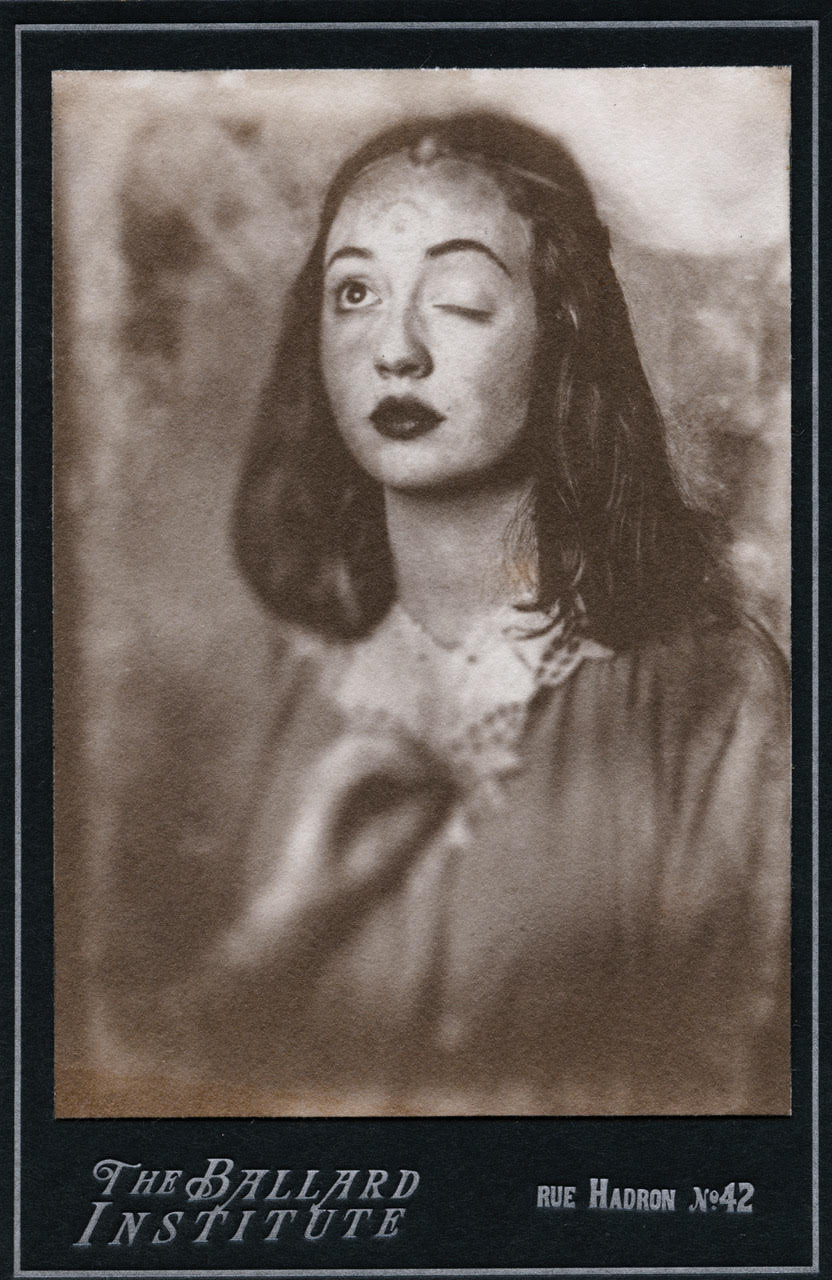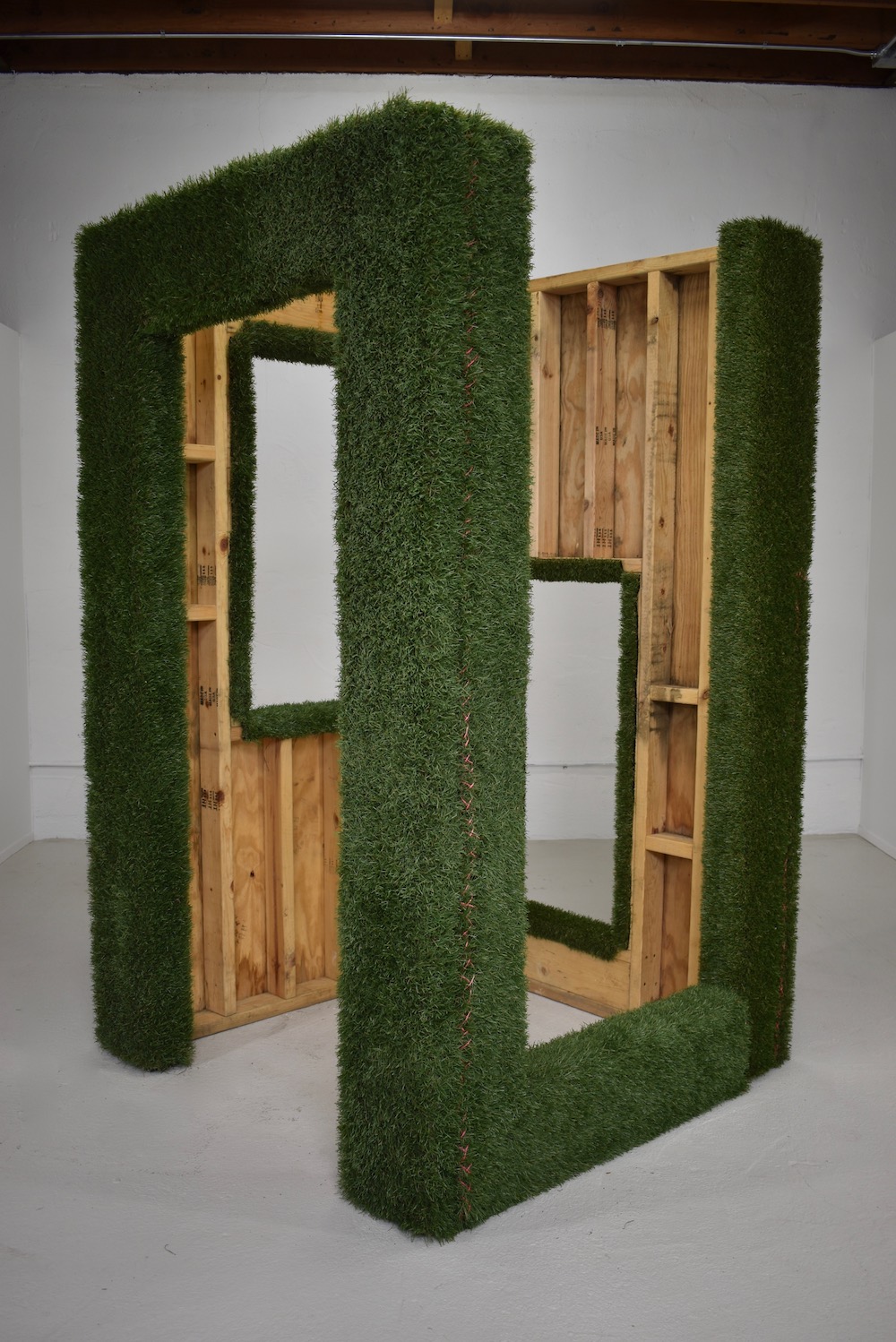

ABOVE: Shohei Katayama, Ancient Voices (2019). Strontium Aluminate, Arduino, motor, specimens collected from Spitsbergen.
Expats: Interviews with Former Louisville Artists
Q&A
with Kevin Warth
What constitutes “local?” Is it as simple as someone who lives here currently or must they be born and bred in the bluegrass? Is this preoccupation well-intentioned or indicative of some sort of xenophobia?
It is imperative that the art community moves past the local/foreign binary if Louisville is to be positioned as an art-forward city. Far too often, conversations about art in Louisville revolve around localness. Just as we would be excited to see Louisville-based artists at galleries and museums in places like New York, Chicago, and Los Angeles, we should embrace outside artists in our own institutions.
To complicate the narrative of local art, I reached out to artists who lived in Louisville at some point but are now elsewhere—expatriates, if you will. Each of these artists are impacted by their time here, even if implicitly so, and carry that experience with them to new places.
Tom LeGoff
Where do you currently live?
I currently live in lower Manhattan, NYC. With my cat that I adopted in Louisville.
Tell me about your practice.
Since graduating with an MFA from UofL, I returned to NYC. I have been shooting commercially to make a living (teaching, events, portraits, reportage) and my personal work has been more focused on classic ‘street photography.’
How has living in Louisville impacted your work or career?
My time in Louisville is really defined by my 3 years attending UofL for graduate school. One of the biggest impacts from this experience is how it improved my ability to interpret and discuss artwork. I have found that when critiquing student's work my ability to offer suggestions has increased dramatically since attending school.
Describe Louisville in one word.
Nice
Angela St. Vrain
Where do you currently live?
I live, work, and make art in the Twin Cities. I moved to the area after participating in an artist residency at a sculpture park in rural Minnesota. Through that experience, I became aware that Minnesota has the highest funding for the arts per capita. I fell in love with the Twin Cities for its diversity, parks system and artist opportunities.
Tell me about your practice.
Taking inspiration from architecture and construction processes, I create spaces for my viewers to interact with and move about. These works tend to be freestanding structures built from a rigid material, typically either wood or steel, and paired with a softer material as the exterior skin of the work. Those delicate materials include wallpaper, window screen, masonry line and artificial grass. The body of work references the connection, or lack thereof, that people have to their homes and the struggle to feel comfortable in those spaces. I’m further intrigued by the transition from one space to another and emotional, physical and financial burdens of the moving process. The work incorporates imagery of roofless structures, tents, doorways and property lines as vehicles for transition.
How has living in Louisville impacted your work or career?
While attending the University of Louisville for undergrad, I lived near campus in various apartments in Germantown, Smoketown and Old Louisville. The work I made during that time frame was directly influenced by the homes and neighborhoods in which I resided. My obsession with neighborhood boundaries was realized while living in Louisville and has carried through as I have moved to different states, cities, communities, neighborhoods, subdivisions and tiny sub-subdivisions. Now that I live in a different city with a larger population, I can discern that I was incredibly fortunate to live in Louisville for financial purposes. Louisville has affordable housing while larger cities are facing housing crises. This move has encouraged me to expand the content of my work from a narrative of a person and their home to more research-based work.
Describe Louisville in one word.
Affordable
Shohei Katayama
Where do you currently live?
I live in Pittsburgh. I finished my MFA program at Carnegie Mellon University about a month ago, so I'm in somewhat of a limbo.
Tell me about your practice.
Primarily I'm an artist that focuses on environmental issues relating to the Anthropocene, pollution, and natural or man-made disasters. Depending on the context, my work manifests as an immersive, interactive, or site-specific land installation. As of lately, I've been participating in expeditions to areas that are affected by climate change, such as the Arctic Circle. In August, I'll be traveling to Brazil's Amazon rainforest for field-research to expand my understanding of the dynamic relationship between deforestation and the pharmaceutical industry. I'm hoping the experience will guide my art's direction for my upcoming solo exhibition in Texas.
How has living in Louisville impacted your work or career?
Louisville is my second home. As I had lived in Tokyo prior, the contrast between the two cities had led me to appreciate nature quite a bit. I did my undergraduate studies at Bellarmine University, so I really owe my love for art making to Louisville. It's an incredible city - I'd love to go back some point.
Describe Louisville in one word.
Weird
Shadia Heenan Nilforoush
Where do you currently live?
I currently live in rural Connecticut where I am going into my third year at the University of Connecticut for an MFA.
Tell me about your practice.
My practice varies in discipline as I find myself working in photo, video, performance, and sometimes installation. However, regardless of the medium, the intention of my practice- or purpose if you will, is always rooted in the same goal: to examine the ways in which we exist as extensions or impressions of our identities and how identity configuration (see limitation) can ultimately act as a border. I often question how we navigate these many borders.
In my practice, I resource my lived experience, as it is the best mentor and muse. Being of mixed heritage has offered immense fuel to my inquiries of identity and how we navigate, or in some cases, circumnavigate invisible borders including but not limited to the psyche, the spirit, and sexuality. My heritage is Iranian on my father’s side and a mix of French, Irish, and Cherokee on my mother’s side, yet I was raised Sunni Muslim in a Pakistani household. I currently sit in the conclusion that I cannot exist as only one because it is essentially impossible. We live in a society where singular categories are best and above the rest. As a result, I have long felt inadequate, unable to claim ties to either side of my lineage and bound by this force of duality. Gloria Anzaldua wrote on the border as being “una herida abierta,” an open wound. If we replace border with identity, we get hit with the same great weight.
How has living in Louisville impacted your work or career?
I lived in Louisville for five years from 2011 to 2016. I moved to Louisville from Chicago by way of Kansas City after growing up in Houston, Texas. The backdrop to my upbringing was incredibly diverse, for lack of a better word. Everywhere I went things were presented in both English and Spanish. My food palette was equally diverse—experiences, music, films, and social groups were all diverse. However, upon arrival to Louisville, I was met with a culture shock I had never known. In 2011 there was not much that captured me, at least not in the ways of the cultural diversity I was familiar with. It was during my first year in Louisville that I became increasingly aware of two things: race and class. Until Louisville, I had never considered or questioned my identity but I quickly understood I was in fact not fully White. To be more precise, I realized I did not perceive myself as being White at all. It was during my BFA at the Hite Art Institute when I began to question everything about my identity and identity as a construct.
Describe Louisville in one word.
I know Louisville’s slogan is “Keep Louisville Weird” but let me say this, as an outsider who now carries a piece of Louisville forever, it is weird and I love it. Once I became more immersed in the quirks of Louisville I saw that it has many shades, is a container for numerous expressions, and is a city where anything is possible (or is that the slogan?).
-
To learn more about the artists interviewed above, visit their websites:
Tom LeGoff
https://www.tomlegoff.com/
Angela St. Vrain
https://www.angelastvrain.com/
Shohei Katayama
https://www.shoheikatayama.com/
Shadia Heenan Nilforoush
https://www.shadiaheenan.com/
Kevin Warth
Managing Editor, Contributor
7.7.19

Tom LeGoff, Townsfolk #2 Pious (2017). Gold toned albumen print on cardstock.

Angela St. Vrain, Your Home, My Turf (2019). Pine wood, plywood, artificial grass, masonry line.

Shadia Heenan Nilforoush, Moving Under the Current of Silent Waves (2018). Performance for video, video still.







